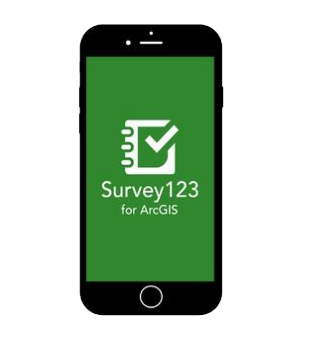Reports & Guide
How to Conduct a PDA
Digital Damage Surveys
Additional Resources
Preliminary Damage Assessments (PDAs) are conducted to enable FEMA — as well as state, local, tribal, and territorial partners — to determine the magnitude of damage and impact of disasters.

PDA Reports
View all Preliminary Damage Assessment (PDA) reports for major disaster declaration requests.
PDA Guide
View the PDA Guide — a standard framework for conducting PDAs following a disaster — and related resources.
How to Conduct a Preliminary Damage Assessment
1. Local Damage Assessment
FEMA provides Digital Damage Survey templates or Street Sheets to help with the collection of damage information.
The process starts at the local level where damage details are initially collected and with state, tribal and territorial authorities.
2. State or Tribal Verification
The state, tribe or territory will collect Initial Damage Assessment (IDA) information and generally has 30 days from the start of the incident to determine whether or not federal assistance (in the form of FEMA Individual Assistance Individual Assistance, Public Assistance or other federal programs may be necessary. FEMA provides Initial Damage Assessment Checklists to guide emergency management officials through the collection of essential information.
If the damage is extensive enough that it exceeds the recovery capacity of a state, tribe, or territory, a formal Joint PDA may be requested through the example PDA Request Letter Template provided. Additionally, an overall Narrative Summary of Impacts can help give the FEMA Joint PDA Team some valuable, big picture context to consider about the disaster’s impact beyond just the data.

Not every incident will result in the need for a PDA or federal assistance.
3. Joint PDA Planning
Once a request for a Joint PDA is made, the information verified by the requesting organization should be provided to the FEMA Regional Recovery Division. FEMA programmatic representatives will coordinate with the requesting organization to discuss the information submitted, determine team requirements, establish a PDA briefing time and location, and develop an overall PDA coordination plan. PDA’s can be in-person or virtual depending on the level of information available in the Initial Damage Assessment.
4. Conducting the Joint PDA
FEMA, and potentially other Federal agencies, will conduct the joint PDA in accordance with the agreed upon PDA coordination plan.
At the conclusion of the PDA the validated and agreed upon information will be returned to the requesting organization to decide if an ask for a Disaster Declaration is warranted.
5. Request for a Disaster Declaration
The Governor or Chief Tribal Executive may submit a request for a Major Disaster declaration utilizing the information collected in the PDA.
Digital Damage Surveys
FEMA’s damage assessment survey templates for both Individual and Public Assistance are available for state, local, tribal and territorial partners to use during the Initial Damage Assessment (IDA) process.
The standardized input fields allow jurisdictions to collect the same information that FEMA gathers during the Joint PDA operation. This information is used to determine whether the jurisdiction is eligible for a disaster declaration. The data captured using these templates is immediately available in the jurisdiction’s ArcGIS Platform and can assist in FEMA’s review of the damages in the event a Joint PDA is requested.
Survey Templates
- Individual Assistance (IA) Damage Assessment Survey Template v4.0.5 - Overview
- Public Assistance (PA) Damage Inventory Survey Template v4.0.6 - Overview
- Public Assistance (PA) Damage Assessment Survey Template v4.0.6 - Overview
Sharing Initial Damage Assessment Data with FEMA
FEMA can accept initial damage assessment (IDA) geospatial datasets from state, tribal, and territorial (STT) governments for upload into FEMA’s Field Assessment and Collection Tools (FACT) System. The FEMA Regional Office can review this data for situational awareness when coordinating the logistics for a Joint PDA field operation or for remote validation of damages during a virtual Joint PDA operation.
View Fact Sheet for More Information
ArcGIS Solution that leverages the above survey templates is available to support States, Tribal Nations, Territories, and local organizations in the Initial Damage Assessment (IDA) process.
The Damage Assessment Solution enables organizations to electronically collect damage reports, assign initial damage assessments, monitor the impact of a disaster on the community, brief stakeholders, and share information with the public using ArcGIS. Information that is collected can be shared with FEMA Regional coordinators in a collaboration group for use during the Joint PDA process.
Organizations utilizing Esri geospatial software can learn more about how to deploy the ArcGIS Solution for Damage Assessment and how it works by visiting the Esri Damage Assessment solution page. This ArcGIS Solution is fully supported by Esri technical support should you need technical assistance configuring the solution.
Download the Survey App
Survey123 for PDAs enables FEMA and SLTTs to electronically collect, submit and validate damage assessment information immediately following a disaster. It provides the capability for all levels of emergency management to collect the same information.
The survey utilizes GIS technology and allows users to easily collect detailed damage information including:
- Location
- Category of damage
- Ownership and insurance information
- Cost estimates
- Other local community impact information

Additional Resources
Preliminary Damage Assessment Training
- IS-556: Damage Assessment for Public Works
- IS-559: Local Damage Assessment
- IS-772: Individual Assistance (IA) PDA Orientation
Public Assistance (PA) Resources
Individual Assistance (IA) Resources
PDA Narrative Report
FEMA Geospatial Resource Center
FY25 IA IHP Cost Calculator
FY25 PA PDA PCI Calculator


